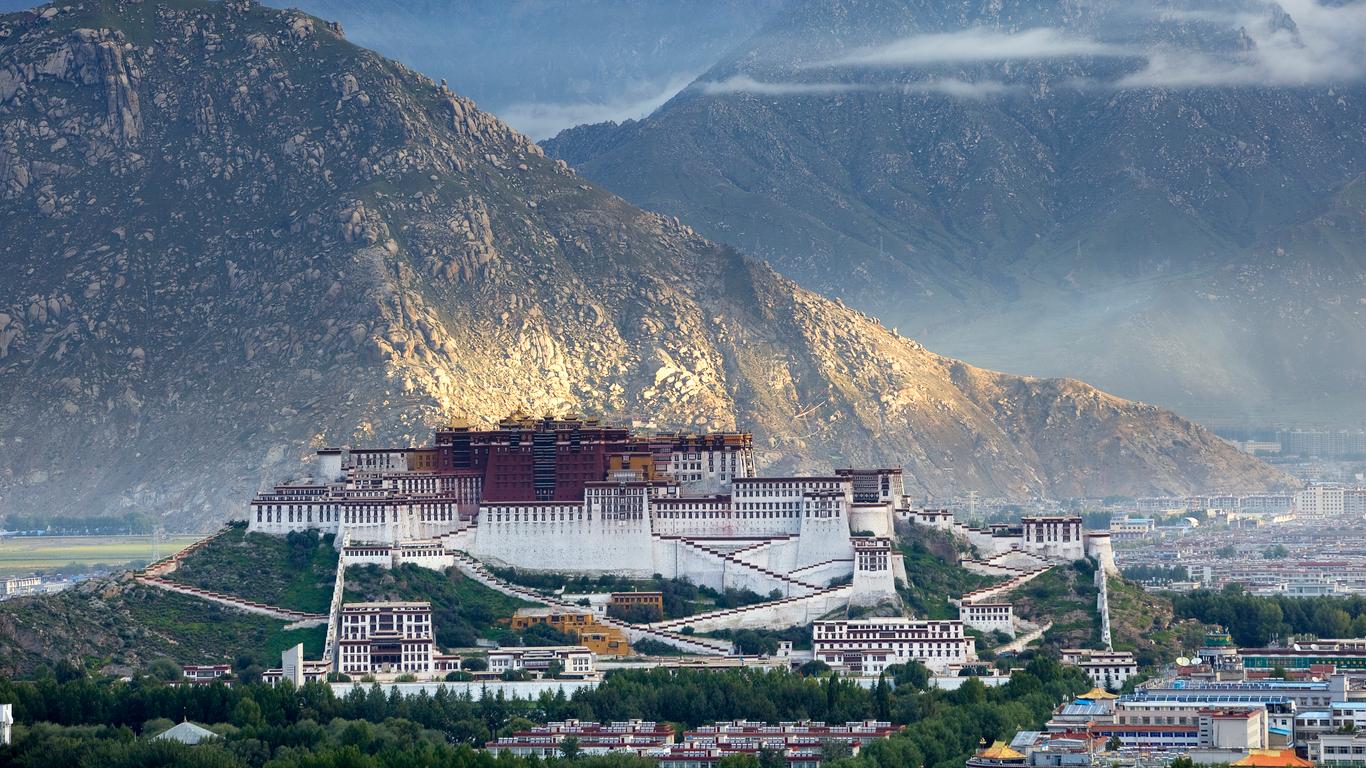The capital of Tibet and a labyrinth of monasteries, temples and colourful market squares, Lhasa draws pilgrims and tourists from far-flung corners of the world. With the Chinese quarter on the west and the Tibetan Quarter on the east, visitors can cross from the elegant Norbulingka Summer Palace to lively street markets and twisting lanes filled with tantalising aromas from small local cafes. Named “Land of the Gods”, it’s common to see traditional Tibetans with spinning prayer wheels circling clockwise around Jokhang Temple, built in the 7th century to hold the official statues of Buddha.
Barkhor Street, the circular road around Jokhang Temple, marks the heart of Old Town Lhasa, where pilgrims and travellers mix with locals at the bustling market, bartering for handmade crafts, prayer shawls, wall hangings and religious trinkets. The temple itself holds the most sacred Buddha statue of all, as the Shakyamuni Buddha was brought from Chang’an 1,300 years ago by Princess Wen Cheng. The bright red-and-white Portola Palace, home of the Dalai Lamas and a UNESCO World Heritage site, sits on the northern slopes of the mountain, opening for one-hour visits to views murals, tombs and chapels and the Dalai Lama’s living quarters.
Travel permits and visas are necessary to visit Lhasa and all of Tibet, typically requiring a tour guide or travel agent. Once in Lhasa, the frequented tourist attractions are navigable by foot, but cycle rickshaws are prevalent and a popular way to get around. Public buses, minibuses and pilgrim buses provide motorised transportation throughout the area.
Lhasa became a prominent political and cultural centre when ruler Songtsen Gampo moved his capital to Lhasa in the 7th century AD. The ruins of his original palace became the Portola Palace, built by the fifth Dalai Lama in the 1600s.





